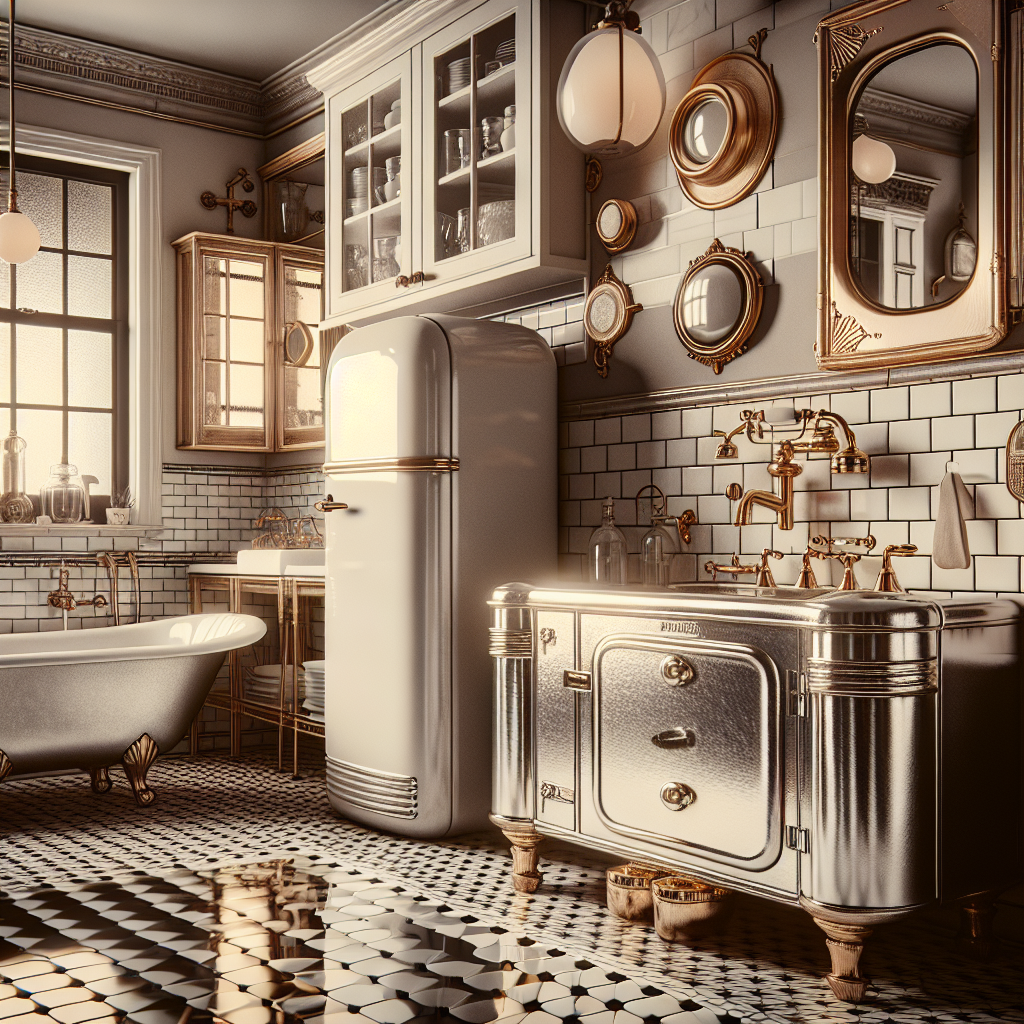Exploring Kitchens and Bathrooms of the Roaring 20s
The 1920s, often referred to as the Roaring 20s, was a decade of significant social and cultural change. This era was marked by economic prosperity, technological advancements, and a shift in lifestyle that influenced various aspects of daily life, including home design. Kitchens and bathrooms, in particular, underwent remarkable transformations during this period. This article delves into the evolution of these essential spaces, highlighting the innovations and trends that defined them.
The Evolution of Kitchens in the 1920s
The kitchen, traditionally a utilitarian space, began to transform into a more functional and aesthetically pleasing area in the 1920s. This change was driven by several factors, including the rise of consumerism, technological advancements, and a growing emphasis on efficiency and hygiene.
Technological Advancements
The 1920s saw the introduction of several kitchen appliances that revolutionized cooking and food storage:
- Refrigerators: The icebox was gradually replaced by electric refrigerators, which became more affordable and accessible to the average household. This innovation significantly improved food preservation.
- Gas and Electric Stoves: These stoves replaced coal and wood-burning stoves, offering more precise temperature control and cleaner cooking methods.
- Toasters and Mixers: Small appliances like toasters and electric mixers became popular, making meal preparation more convenient.
Design and Layout
The design of kitchens in the 1920s emphasized efficiency and cleanliness. The “work triangle” concept, which optimizes the layout between the stove, sink, and refrigerator, began to take shape. This design principle aimed to minimize movement and enhance workflow in the kitchen.
Cabinetry also evolved, with built-in cabinets becoming more common. These cabinets were often painted in light colors to create a sense of space and cleanliness. Linoleum flooring, known for its durability and ease of cleaning, became a popular choice for kitchen floors.
The Transformation of Bathrooms in the 1920s
Bathrooms in the 1920s underwent a transformation from purely functional spaces to areas of relaxation and luxury. This shift was influenced by advancements in plumbing, a growing awareness of hygiene, and changing social attitudes towards personal care.
Plumbing Innovations
Advancements in plumbing technology played a crucial role in the evolution of bathrooms:
- Indoor Plumbing: By the 1920s, indoor plumbing became more widespread, allowing for the installation of flush toilets and running water in homes.
- Hot Water Heaters: The introduction of hot water heaters made it possible to have hot water on demand, enhancing the bathing experience.
Design and Aesthetics
Bathrooms in the 1920s began to reflect the Art Deco style, characterized by bold geometric patterns, vibrant colors, and luxurious materials. Tiles in black and white or pastel colors were commonly used for walls and floors, creating a clean and stylish look.
Freestanding bathtubs, often made of cast iron with porcelain enamel, became a focal point in the bathroom. These tubs were not only functional but also added an element of elegance to the space. Pedestal sinks and chrome fixtures further enhanced the bathroom’s aesthetic appeal.
Conclusion
The kitchens and bathrooms of the Roaring 20s were a testament to the era’s spirit of innovation and change. Technological advancements and a shift in design philosophy transformed these spaces into more efficient, hygienic, and aesthetically pleasing areas. The introduction of modern appliances and plumbing systems laid the foundation for the contemporary kitchens and bathrooms we know today. As we look back at the 1920s, we can appreciate how this transformative decade shaped the way we live and interact with these essential spaces in our homes.



